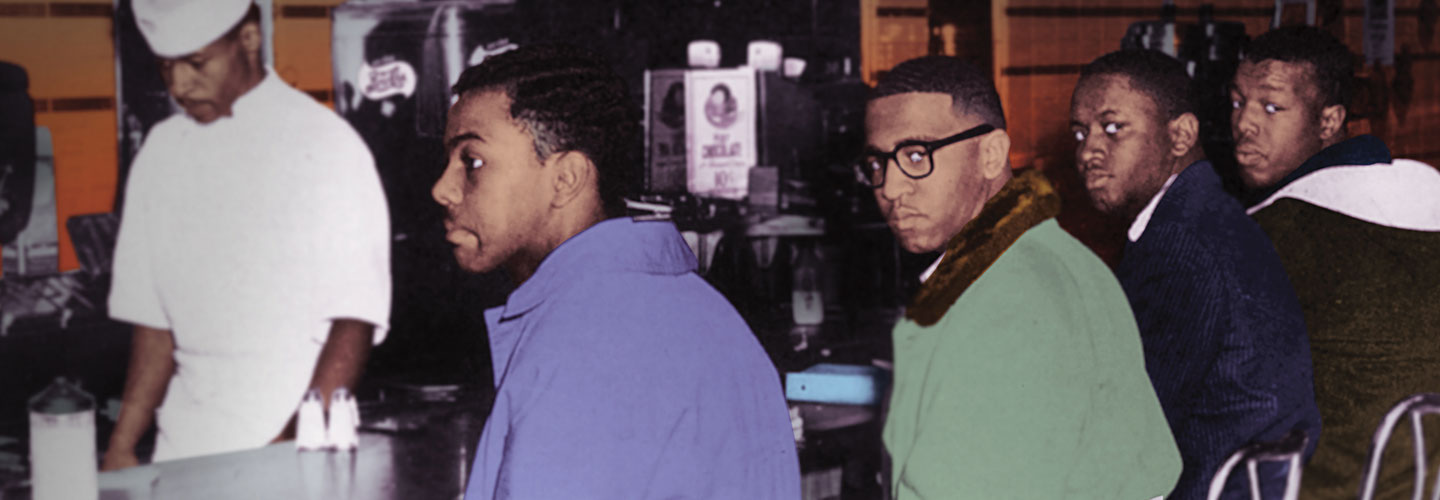N1: The next day, the boys stand outside Woolworth’s in their best clothes.
Joe: My heart is pounding.
David: Remember that whatever happens, we don’t fight back. We don’t talk back.
N2: They enter the store. David picks out some pencils and goes to check out.
David: I’d like to buy these, please.
Store Clerk: That’s 50 cents.
N3: David pays and takes his receipt.
N1: The boys go over to the lunch counter and sit down.
N2: The room goes silent. For a while, nothing happens.
N3: The waitress ignores them. White customers give them dirty looks.
Franklin: Excuse me, ma’am. We’d like to be served.
Waitress: I’m sorry. I can’t.
Joe: We would just like a cup of coffee, please.
Waitress: You can go to the stand-up counter downstairs.
David: We would like to sit here, ma’am.
N1: The manager comes over.
Mr. Harris: Is there a problem here?
Ezell: No, sir. We’d like to order some coffee, please.
Mr. Harris: Boys, I can only serve you downstairs.
David: You let me buy pencils a few minutes ago.
Mr. Harris: This counter is for whites only.
Franklin: Is sitting here against the law?
Mr. Harris: No. But it’s the rule at our store.
Joe: Sir, we don’t agree with the rule. And we’re going to sit here until we are served.
N2: An elderly white customer walks over.
N3: They think she is going to say something mean.
Customer: Boys, I am so proud of you. This should have been done long ago.
N1: The boys sit taller knowing she is on their side.
N2: A police officer enters. He paces back and forth behind the boys, slapping his nightstick into his palm.
David (whispering ): He could crack our skulls with that.
Mr. Harris: Officer, they won’t leave!
Police Officer: I can’t arrest them for just sitting there. Have they started any fights?
Mr. Harris: No, they have been very polite.
Police Officer: Close the store early. This will all blow over in a day or two.
Mr. Harris: I wouldn’t be too sure about that.

